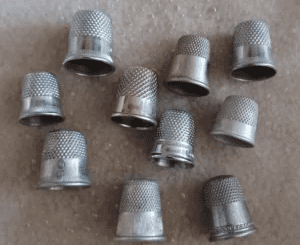Puzzles are not just fun—they’re fantastic for boosting focus, attention to detail, and problem-solving skills. Today’s visual challenge is a classic “spot the differences” brain teaser that’s perfect for all ages. You’re presented with two nearly identical images of two kids playing leapfrog. But don’t let the cheerful illustration fool you—there are exactly four subtle differences between the two pictures.
Think you’ve got sharp eyes? Let’s put that to the test. Look closely and try to find all four differences before scrolling to the answers!

Ready, Set, Observe!
Before we dive into the solution, take 30 seconds to really examine both images. Notice the expressions, colors, clothing, and all the tiny details. Some differences are obvious, but others might take a second glance.
Why Spot-the-Difference Puzzles Are Trickier Than You Think
Spotting differences sounds easy until you’re actually doing it. These puzzles are designed to test how carefully we look at something and whether we notice what’s missing, extra, or altered.
Here’s why most people don’t catch all four differences on the first try:
- We focus on big picture elements rather than zooming in on the finer details.
- We expect symmetry, so our brains fill in missing or altered details automatically.
- We get distracted by expressions or colors, leading us to overlook shapes and outlines.
- Time pressure makes us rush, and that causes us to miss things right in front of our eyes.
Let’s walk through this image together to make sure you don’t miss a thing.
Step-by-Step Breakdown: Finding the 4 Differences
Let’s analyze the image in a structured way—from top to bottom—so you don’t skip over any section.
Video : Only 2% people can find the difference
1. The Cap Logo
Look closely at the cap of the boy on top.
- Left Image: The red logo on the cap is fully visible.
- Right Image: The logo is missing one part—it’s slightly altered.
✅ Difference #1: The red logo on the cap is different.
2. The Hair Curl of the Boy on Top
Focus on the boy’s bangs under the cap.
- Left Image: His hair has two visible tufts sticking out from under the cap.
- Right Image: One of the tufts is missing.
✅ Difference #2: One lock of hair is missing.
3. The Sock of the Jumping Boy
Check the boy’s legs and feet.
- Left Image: He has visible white socks above his red shoes.
- Right Image: One sock is missing completely.
✅ Difference #3: One of the socks is missing.
4. The Pocket on the Boy Bending Down
Now look at the pants of the boy who is being jumped over.
- Left Image: A pocket is visible on his pants.
- Right Image: That pocket is gone.
✅ Difference #4: The pants pocket has disappeared.

If you found all four, congratulations! You’ve got an eagle eye for details. If you missed one or two, don’t worry—this is exactly why these puzzles are so addictive.
Why Small Differences Are Easy to Miss
These types of visual games exploit how our brains are wired to recognize patterns. When something is mostly the same, our brains will naturally assume the entire image is the same unless something really jumps out.
That’s why:
- A missing sock is easy to overlook.
- A single hair strand seems irrelevant.
- A shifted pocket just blends in with the pants.
The more you train your brain to slow down and analyze piece by piece, the better you’ll get at spotting these subtle details quickly.
Interactive Challenge: Can You Beat Your Friends?
Now that you’ve seen the answers, here’s your mission:
- Share this post with a friend and challenge them to find the four differences without hints.
- Time them and see who finds them fastest.
- Drop your time in the comments—let’s see who’s the fastest spotter out there!
Video : 🐢🧩 Find The Difference | Puzzle Masters Only 🧩🐢
And if you noticed a different detail that we didn’t list, post a screenshot and let’s debate it in the replies!
Conclusion: Practice Makes You Sharper
These puzzles aren’t just fun—they’re mental fitness for your eyes and brain. By spotting differences, you improve visual perception, memory, and focus. It’s a great exercise for both kids and adults, and a healthy break from scrolling mindlessly.
Keep challenging yourself with puzzles like this. The more you practice, the faster and sharper you’ll become. Whether it’s spotting tiny visual inconsistencies or training your mind to think logically under pressure, you’ll be surprised how much your brain improves.
So—did you spot all 4 differences? Or did one sneak by you?
Comment your score, tag a friend to try it too, and keep those brain cells buzzing.


